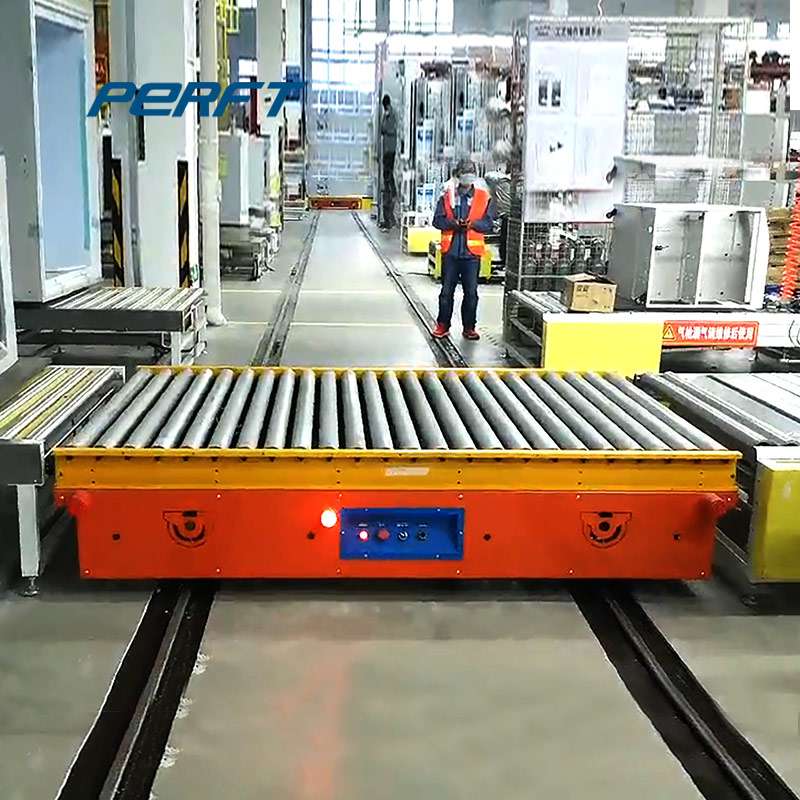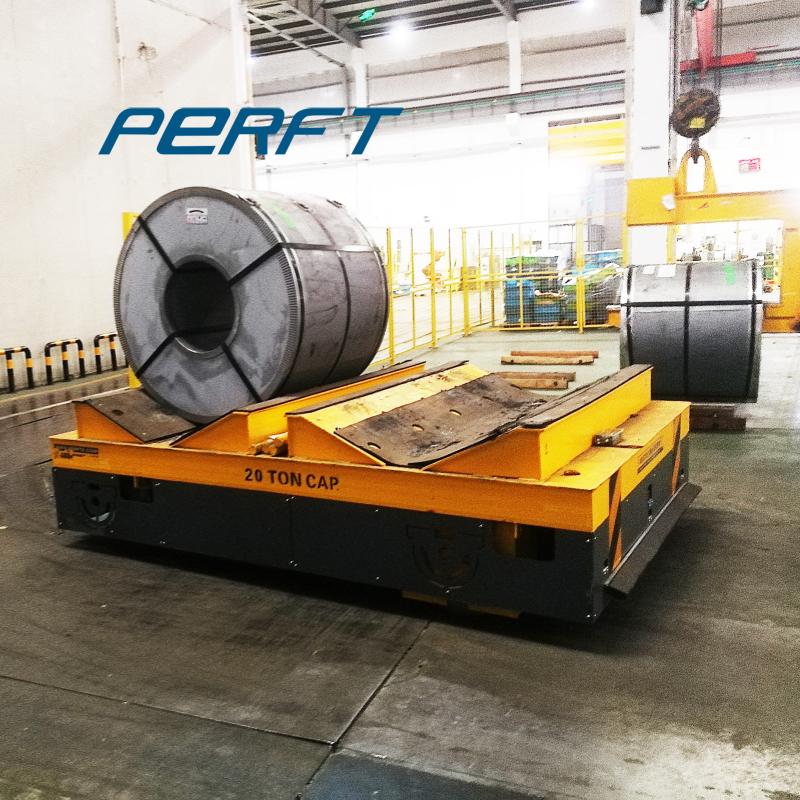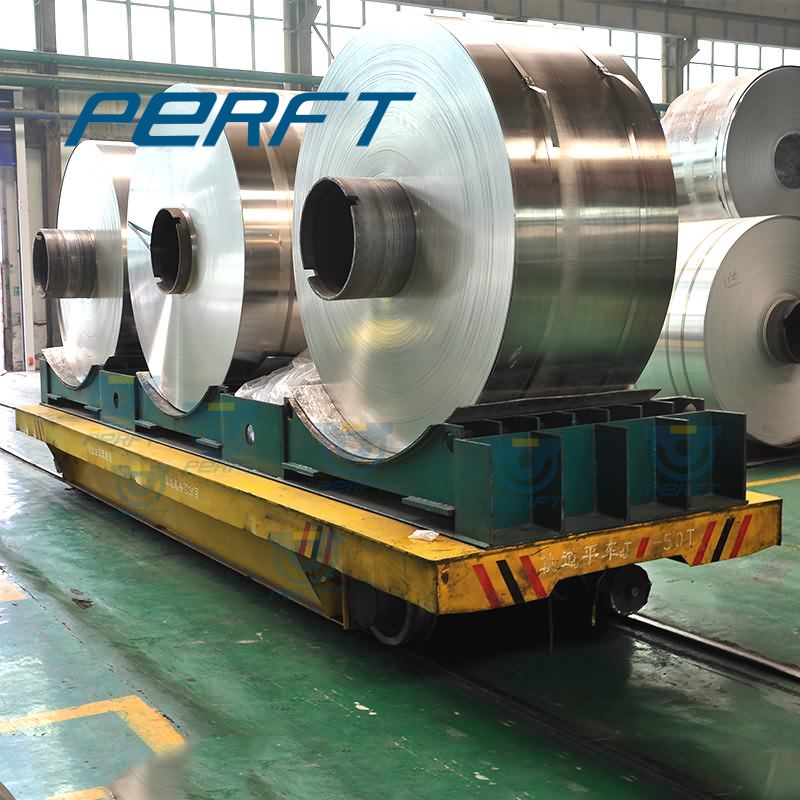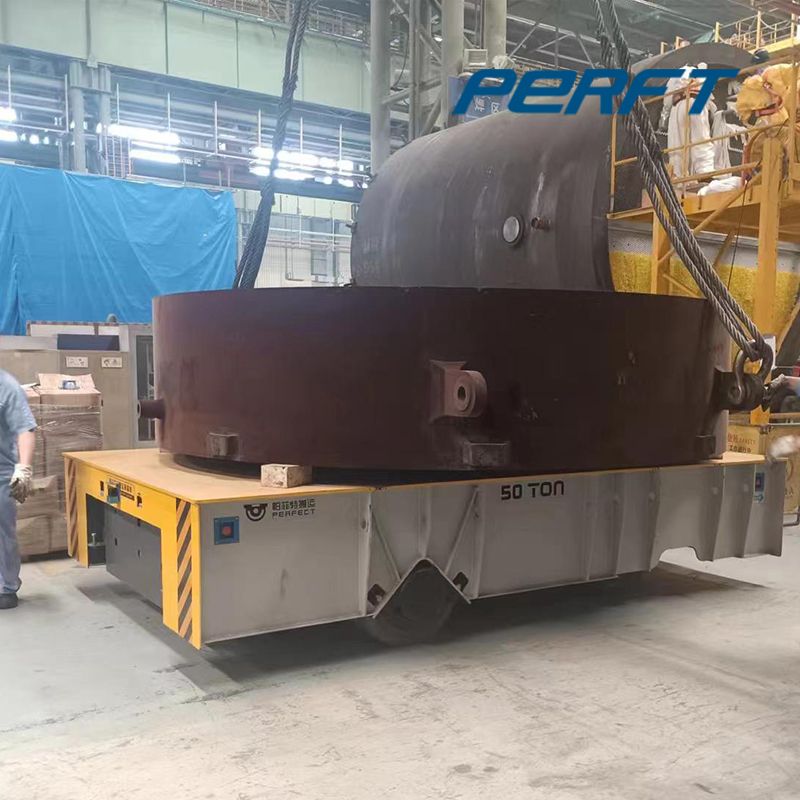Electric Transfer Cart and Wheel System Guide
In the field of industrial material handling, motorized transfer carts hold a significant position due to their efficiency and convenience. Among these, trackless transfer trolleys and rail based battery operated transfer carts represent the two mainstream types, each with distinct structural, performance, and application focuses. This article will provide a detailed analysis of the characteristics, wheel configurations, core advantages, and maintenance essentials for both types of equipment.
2 Types of Material Electric Transfer Cart
Trackless Trolley With All Directions
The defining feature of trackless electric carts is their freedom from rail constraints, enabling unrestricted movement across any terrain. Their wheels utilize solid cast steel with rubber-coated tires, adapting to diverse ground conditions while supporting 360-degree flexible turning.
This flexibility makes them particularly effective in scenarios with frequent workshop layout adjustments or irregular terrain. However, they have certain limitations: relatively higher cost and a typical load capacity not exceeding 500 tons. Beyond this range, stability and cost-effectiveness significantly decline.
Rail Guided Cart
Rail transfer carts must operate along fixed tracks but offer far greater load-bearing capacity than trackless types. Classified by power supply methods, battery powered transfer trolleys suit scenarios requiring wide mobility, while low voltage rail-guided electric carts rely on track-supplied power for fixed-path transportation.
Additionally, electric heavy duty platform trolly on rail can be customized as specialized vehicles: hydraulic lift carts adjust cargo height, vacuum furnace transfer carts withstand high-temperature environments, and rail-guided heavy duty carriers handle oversized cargo transfers.
Wheel Systems of Material Handling Cart
- Wheel Systems for Trackless Transfer Carts
The core wheel system for trackless trolley with all directions consists of swivel casters, whose type must be selected based on the operating environment. High-temperature settings require heat-resistant wheels to prevent rubber melting;
Uneven surfaces necessitate shock-absorbing wheels to minimize cargo jostling;
Oil-contaminated environments demand anti-slip wheels to prevent skidding.
Solid cast steel wheels with rubber casings serve as the standard configuration, combining the load-bearing capacity of steel wheels with the shock absorption of rubber while minimizing ground wear.
- Rail Transfer CartWheel Systems
Wheel designs for rail electric transfer cars must strictly match track dimensions, typically employing solid steel wheels to ensure deformation resistance under prolonged heavy loads. The contact precision between wheels and tracks directly impacts operational stability—excessive clearance causes wobbling, while insufficient clearance risks derailment.
Core Advantages of Motorized Transfer Cart
- Advantages of Trackless Electric Transfer Carts
Flexibility is their standout feature, eliminating the need for pre-laid tracks and enabling rapid adaptation to production layout changes. For scenarios involving medium-to-small loads (under 100 tons) and multi-site transfers, they significantly outperform rail based transfer trolleys in efficiency.
Additionally, their low installation costs and absence of complex track engineering make them ideal for temporary or short-term use sites.
- Advantages of Battery Transfer Cart on Rail
Their core strength lies in exceptional load capacity, effortlessly handling hundreds or even thousands of tons. Fixed-track operation ensures high precision, making them ideal for point-to-point transfers between production lines.
Multiple power supply options adapt to diverse environments: sealed conductor rails for humid conditions, and custom explosion-proof battery systems for hazardous workshops.
Wheel Maintenance for Motorized Transfer Trolley
Trackless Steering Transfer Carts
Regularly inspect the tightness of swivel wheel bolts. Looseness may cause “flat spots” that impair steering. Lubricate monthly to ensure smooth rotation.
Replace rubber wheels immediately if cracks or air leaks appear, as uneven loads may damage the car body. After replacement, tighten nuts and install lock washers.
Rail Motorized Transfer Carts
Weekly inspections should assess wheel-to-rail contact and clear debris from the track to prevent derailment. Quarterly measurements of wheel wear are required; replace wheels exceeding wear limits promptly to prevent track deviation.
Additionally, regularly inspect the power supply system and its linkage components with the wheels to ensure stable power delivery without operational disruption.
Both trackless electric transfer trolleys and rail-guided electric carts have their respective applications. Selection should be based on factors such as load capacity, workspace conditions, and usage frequency. Trackless carts are suitable for flexible operations and medium-to-light load scenarios, while rail guided transfer carts are ideal for heavy-load applications and fixed-path operations.
Regardless of the equipment chosen, wheel system maintenance is critical. Regular upkeep extends service life, reduces failure rates, and ensures efficient and safe industrial material handling.
Back to List
-
 下午5:436 Types of Industrial Conveyor Systems Used in Warehouses
下午5:436 Types of Industrial Conveyor Systems Used in Warehouses -
 下午4:53Electric Transfer Cart and Wheel System Guide
下午4:53Electric Transfer Cart and Wheel System Guide -
 下午5:00Precision Docking for Rail Transfer Carts Smart Handling
下午5:00Precision Docking for Rail Transfer Carts Smart Handling -
 上午9:33C-Hooks and Coil Transfer Carts
上午9:33C-Hooks and Coil Transfer Carts -
 下午6:23Transfer Carts vs. Forklifts: Which is the Better Handling Equipment for You?
下午6:23Transfer Carts vs. Forklifts: Which is the Better Handling Equipment for You?

